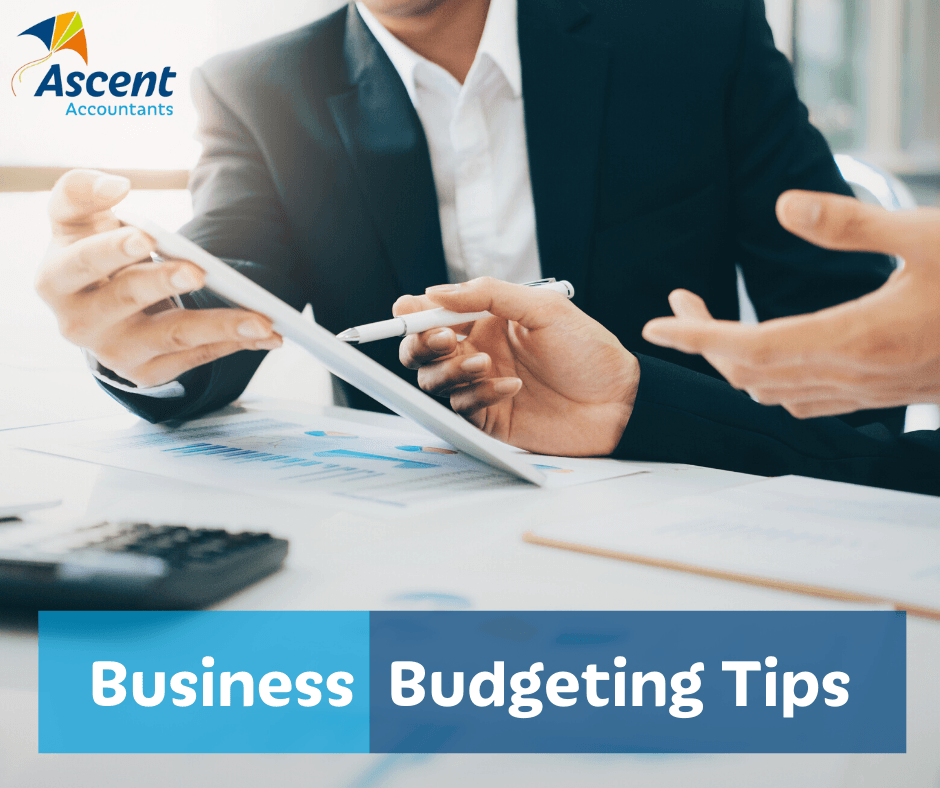Business budgeting tips for the new financial year

1. Review your profit and loss
Your profit and loss report is one of the first and most important things to review in a business budget. This report shows you whether your business is making or losing money.
To calculate this, all you need to do is subtract your business expenses from your income.
If you find that your business report comes out to a loss, this is a good time to look into getting professional help as running a business at a loss is not sustainable. However if you find your business is making a profit, then you still need to sit back and review your business budget to see if there is potential for an increase, if you can pay off any debts quicker, and to make sure that you don’t get too comfortable and complacent and turn that business profit into a loss.
2. Review your balance sheet
Your business balance sheet is what shows your businesses worth. It shows everything from your business’s tangible assets, cash in the bank and unpaid invoices to your business liabilities such as taxes, loans and other unpaid expenses.
Your business balance sheet is an important document to review and will give you a good overall idea of how your business is tracking. It will also quickly show you where the biggest incoming and outgoing expenses in your business come from which can be reviewed and adjusted if necessary.
3. Apply for affordable business financing as soon as you can
If you are tossing up whether or not to apply for a loan, line of credit or some other type of business financing product to help support growth, don’t sit back and wait.
The best time to apply for business financing is when your cash flow is strong and you don’t need it, and there aren’t any account-draining business concerns to deal with. Banks also prefer to give out loans to business’s who are in a stronger financial position.
With this in mind, don’t just take out a business loan because you can. Also consider the possibility of flexible business finance options such as a line of credit that doesn’t actually take out funding until your business needs it.
Either way, applying when you’re in a strong business position can help you lock in an affordable interest rate and terms that will pay dividends for your business later on.
4. Focus on your return of investment
Everything that you put into your business should be done so while keeping in mind the return it will bring.
Expenses like business marketing are well worth reviewing. For example, is the money that your business is putting into your marketing generating enough sales for your business to warrant the cost of the marketing itself?
Take a look over your business finances for the last month, quarter and year, and see what elements of the business had the best and worst return on investment, and go from there.
5. Cut down on fixed cost commitment
With the last few months proving how unpredictable everything can be, flexibility is more important than ever for a business.
Therefore it could be well worth while reviewing the subscription services in your business. Partly to cut down on any that your business don’t use regularly. But it is also worth potentially switching annual business subscriptions to monthly. This may be more expensive for your business in the long run, but it gives you the flexibility to cancel should unforeseen circumstances arise within the business. Your business shouldn’t be paying unnecessary outgoing costs if it doesn’t have too. This will end up being more expensive for your business than if you can just cancel when needed.
6. Get tech savvy
We live in a day and age where there is a program for just about everything, including your business budgeting.
Your time is money, so it could be worth researching different software that can help you streamline your workload and keep track of everything within the business.
When it comes to your business budgeting and business finance, you don’t want to take any serious risks, so it’s always worth while getting professional help.
Need help with your accounting?








